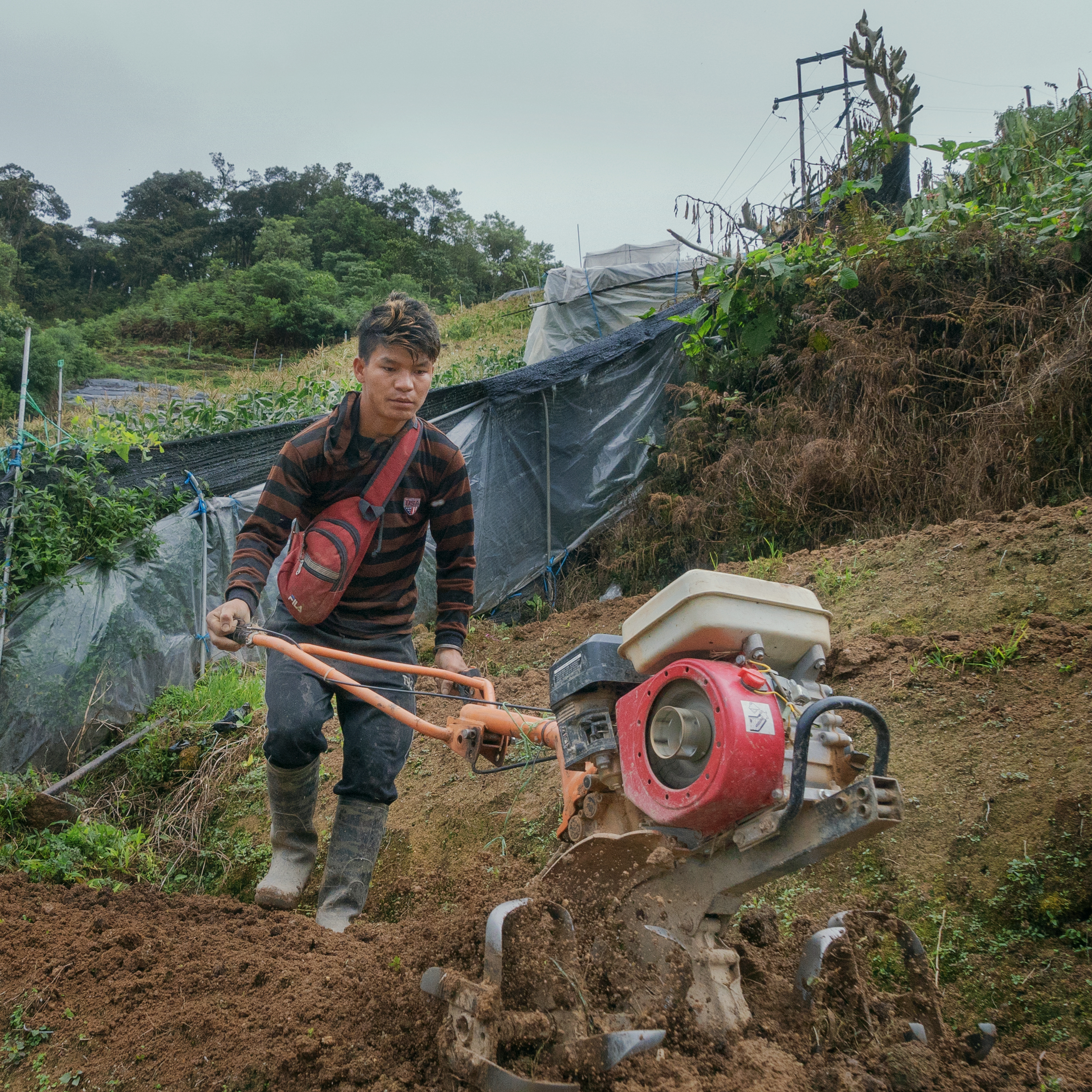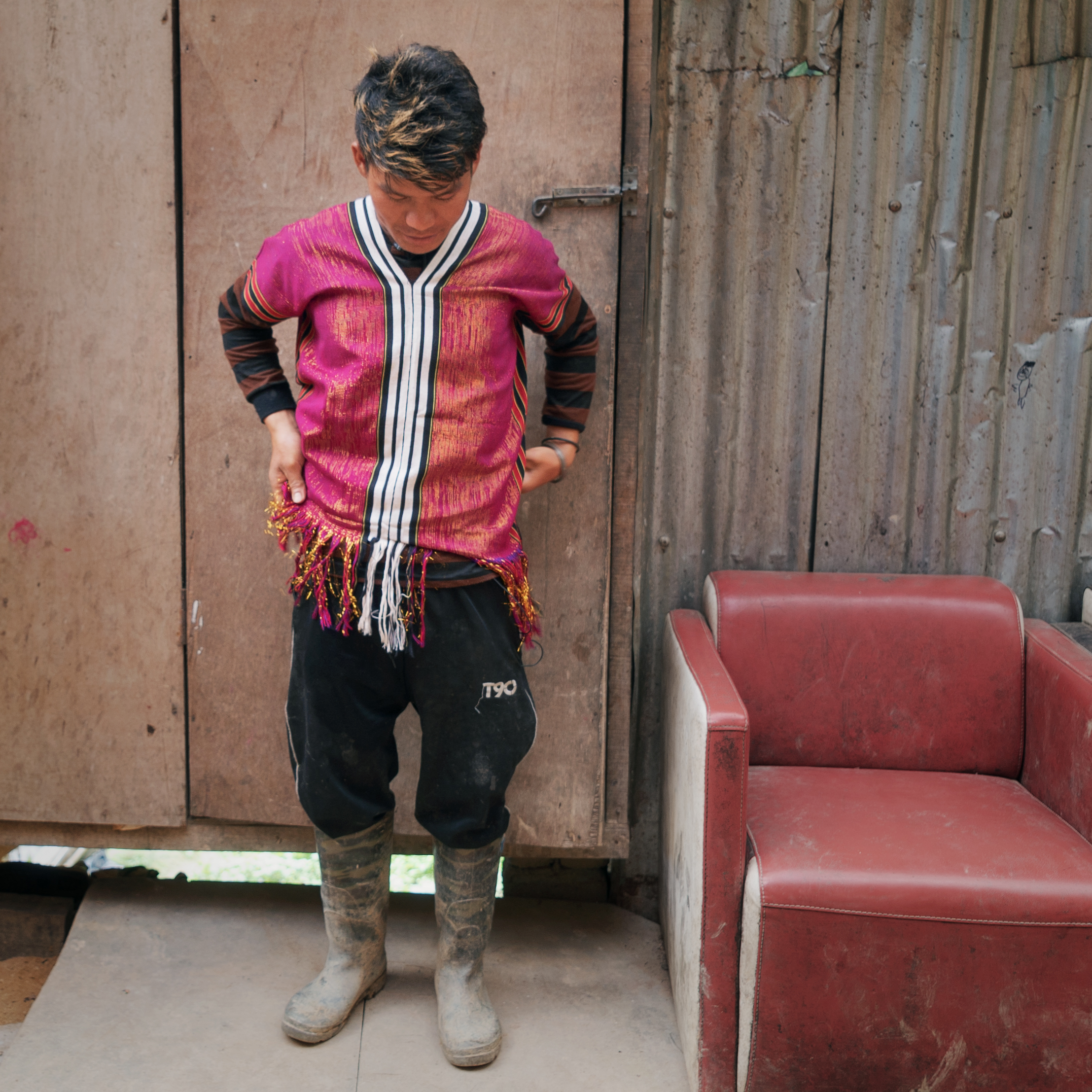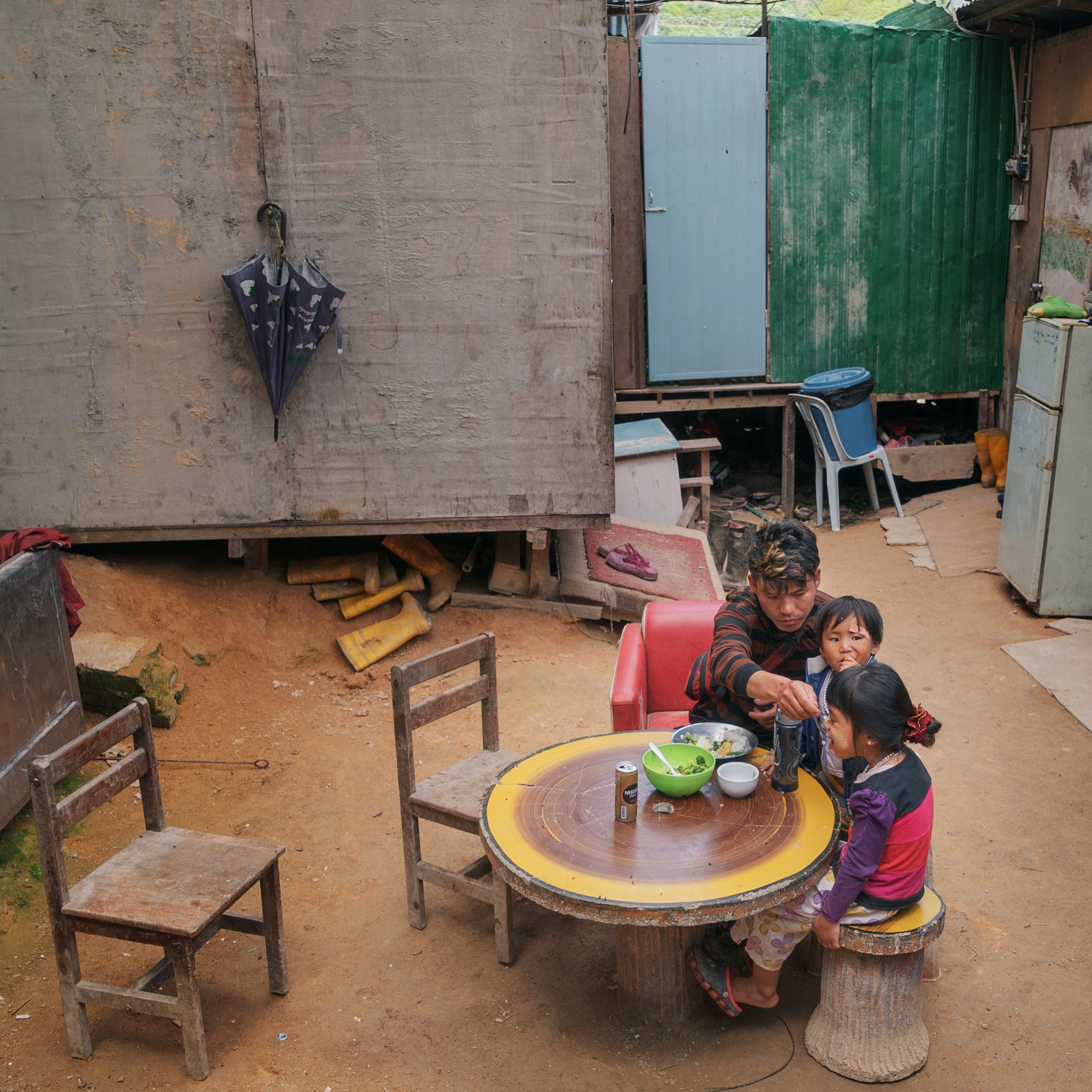
“The reason why I settled in Cameron Highlands is because it feels like home. My province back in Myanmar was cold like this too and there too I worked as a farmer. I used to grow corn back home, just like I do here, but we barely made enough to eat, so selling was not an option. The corn here tastes really good but if I’m being honest, the corn back homes tastes much better. I think it’s because we didn’t use fertilisers or pesticides. But we didn’t have an irrigation system like we do here. If it didn’t rain, we didn’t eat.”

“This is a traditional shirt, made from the traditional fabric of our Chin people. When we left our hometown, We had to pay agents to smuggle us out. We travelled across rough waters, many of us crammed in small boats. I had packed a few bags of things to bring along with me but the agent didn’t allow me to bring them on board. He threw everything away except for a small backpack. This shirt was in the backpack, and it’s the only thing that I still have with me from that journey. Everything else was thrown into the river. I may never go back again, so I want to keep this in good condition.”

“They’re running around all day long. When I get home from work, usually one of them will have a new bruise. They used to go to a refugee school nearby but that’s been closed down. Now they just run around - that’s all they have to entertain themselves. My wife is carrying our third child now and I’m worried that if they don’t get to school, they will be left far behind, just running around and getting bruises.”
This material does not necessarily reflect the views or policies of the United States Department of Labor, nor does mention of trade names, commercial products, or organizations imply endorsement by the United States Government. 100% percentage of the total costs of this project or program is financed with Federal funds, for a total of 26,322.61 dollars.